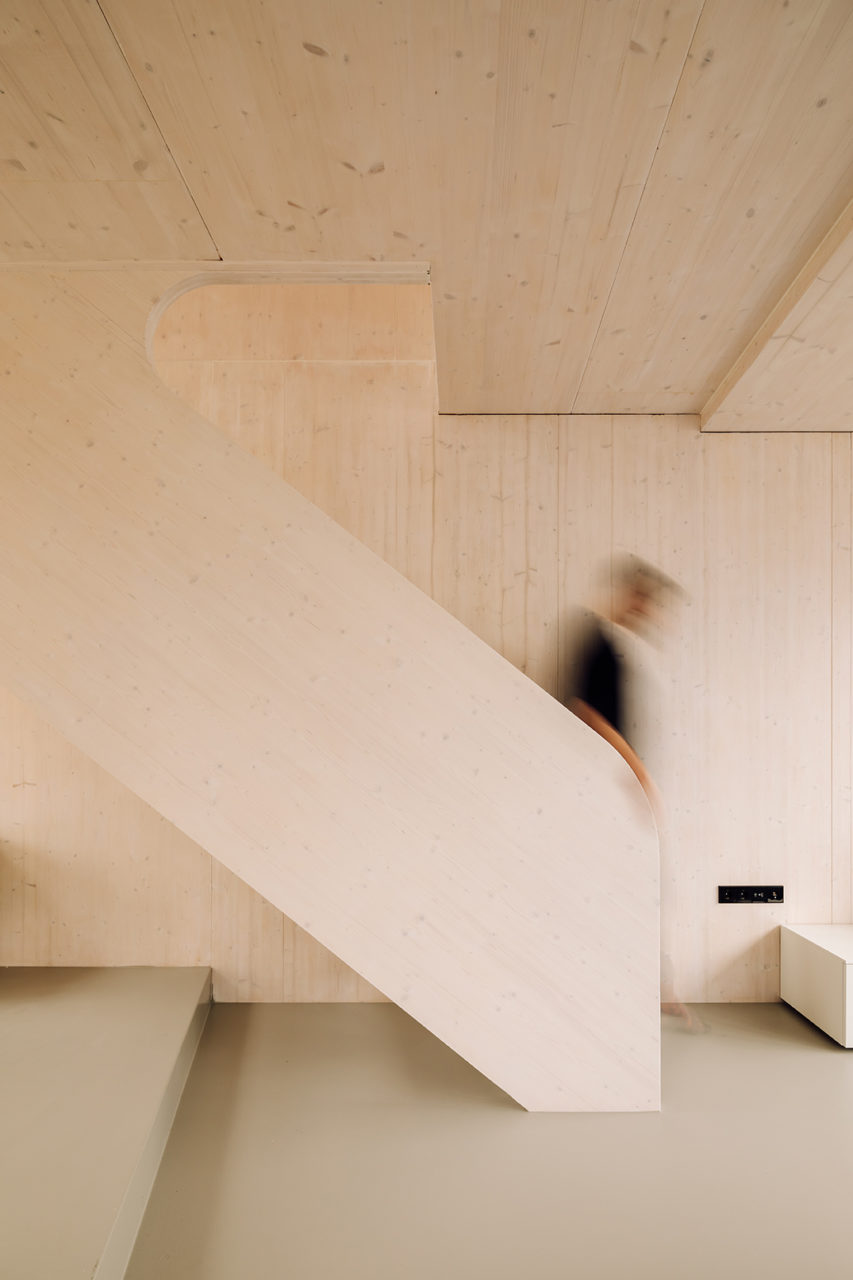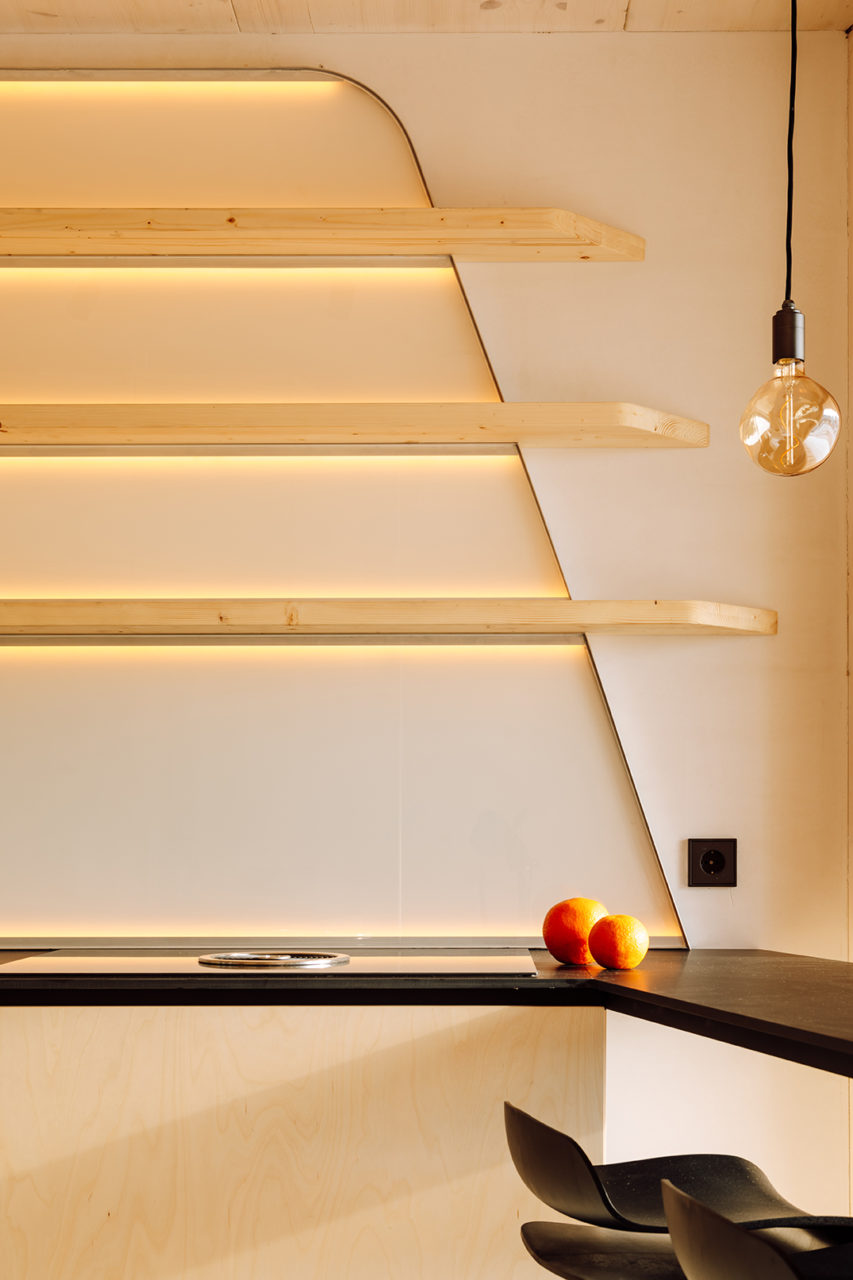If you’ve ever spent an extended amount of time in the Netherlands, you’ll know that most of its urban and suburban row house blocks follow the same formula: red brick roads and narrow homes with large street-facing windows and steep stairwells. You’ll know that the country also serves as a hotbed for experimental architecture.
Reduced to rubble in World War II, Rotterdam, in particular, has served as something of a blank urban canvas. Leading architecture firms like OMA and MVDRV have made a name for themselves by creating structures the defy tectonic and aesthetic norms.

Much of the country’s capital Amsterdam is occupied by historical buildings erected from the Dutch Golden Age through to the early 20th-century, when the protomodern Amsterdam School style reigned supreme. However, newly constructed neighborhoods on the city’s edge incorporate a more eclectic range of styles. One such area is the artificial IJburg island built on .8 square miles of reclaimed land.
The gridded neighborhood plays host to a range of residential typologies. Some developments reinterpret the classic Amsterdam vernacular while others employ modernist principles to establish larger-than-normal floorplates.
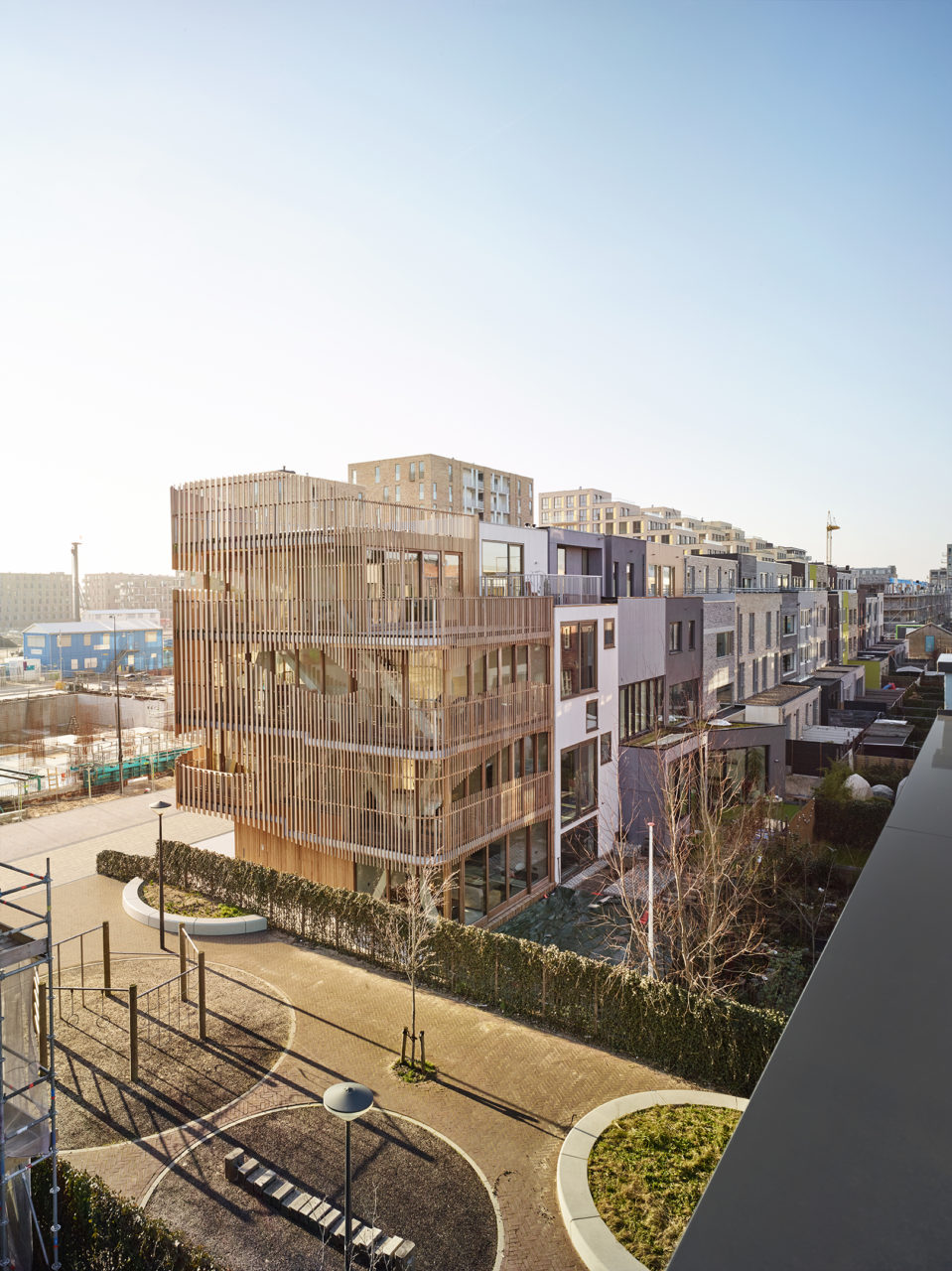
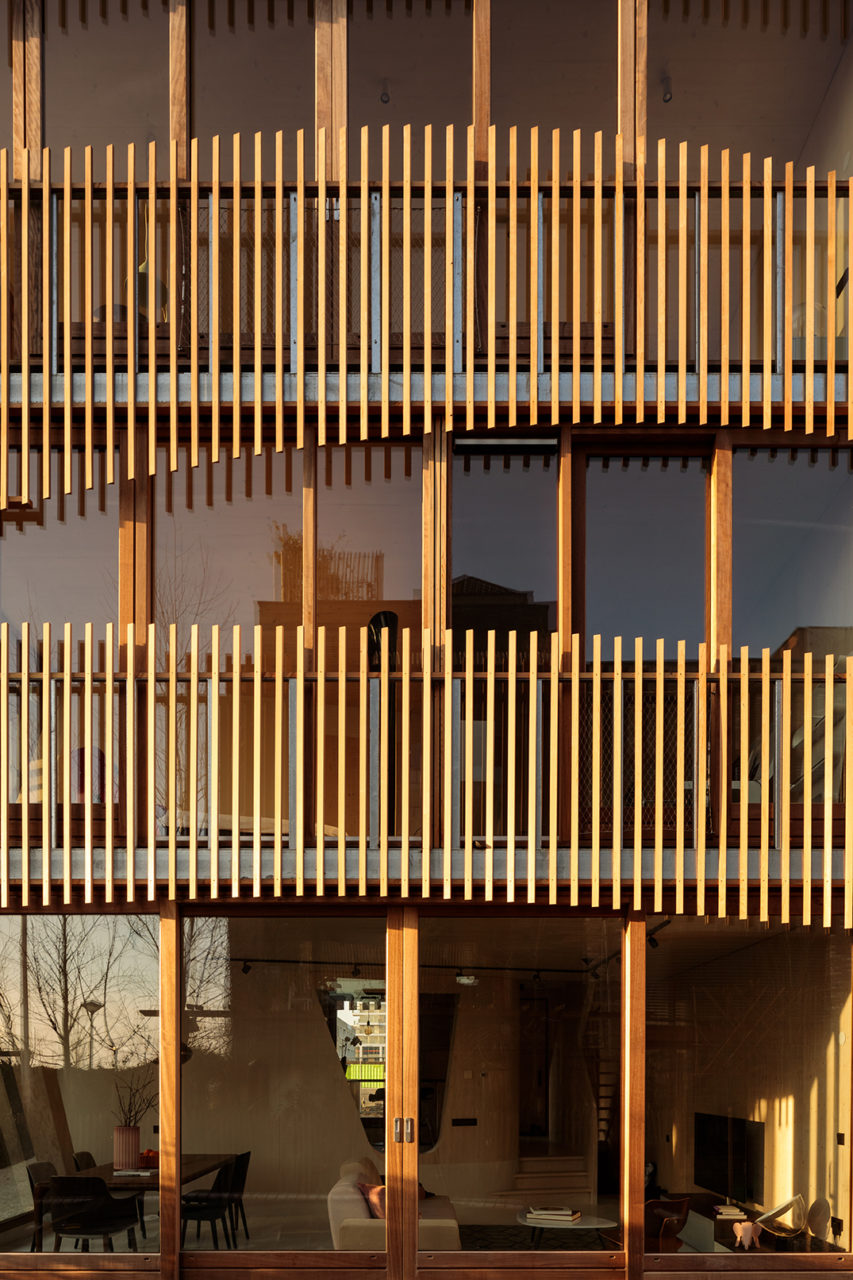
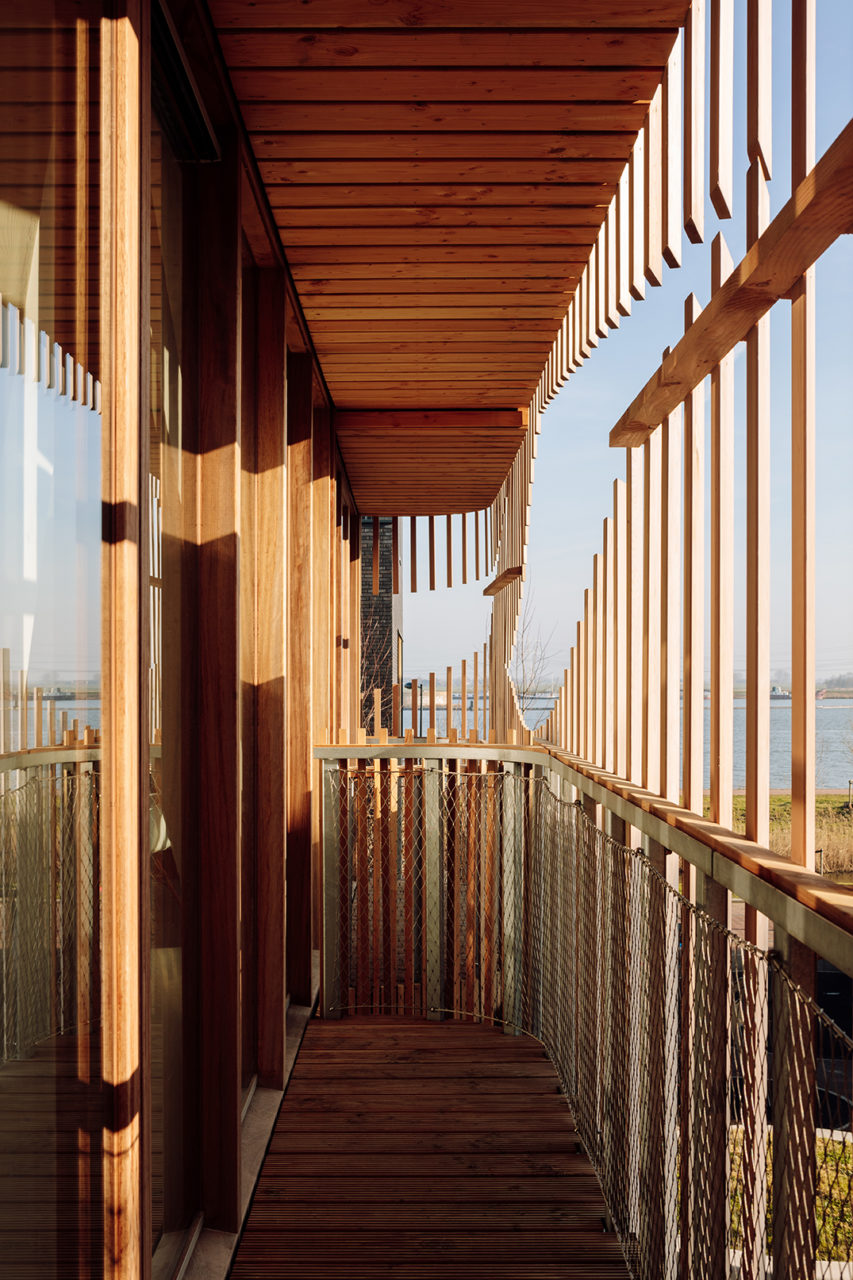
Breaking the monotony of rectilinear homes is the new Freebooter house by local firm GG-Loop. Making the most of its corner perch, the organic structure curves into place with wrap around porches and an open louver facade that pays homage to nature and The Netherland’s deeply ingrained maritime culture.
Built like the hull of a ship, the compact two unit building is named for the historic freelance merchant marines who used to assemble teams of sailors to explore the high seas and established trade routes with far off places. The Dutch were arguably the first explorers and in turn capitalists. Amsterdam itself grew rapidly in the 16th and 17th century due to this phenomenon.
Freebooter resembles a boat that has been washed up on land. GG-Loop’s ample use of Binderholz and Ekoflin CLT laminated timber, steel, and glass to wrap its exterior suggests that the ship they are eluding to is modern and eco-friendly.
Though the home’s curtain-wall exposures makes it look as though it might leak heat and waste energy, the structure’s high-performance wall insulation, roof-top solar panels, and low-temperature underfloor heating ensure that it achieves net-zero efficiency. 98% of the wood used is PEFC certified, which means the building stores nearly 80 tonnes of CO2, offsetting nearly 700,000 km of exhaust gas from a mid-range car and the energy consumption of 87 homes in one year.
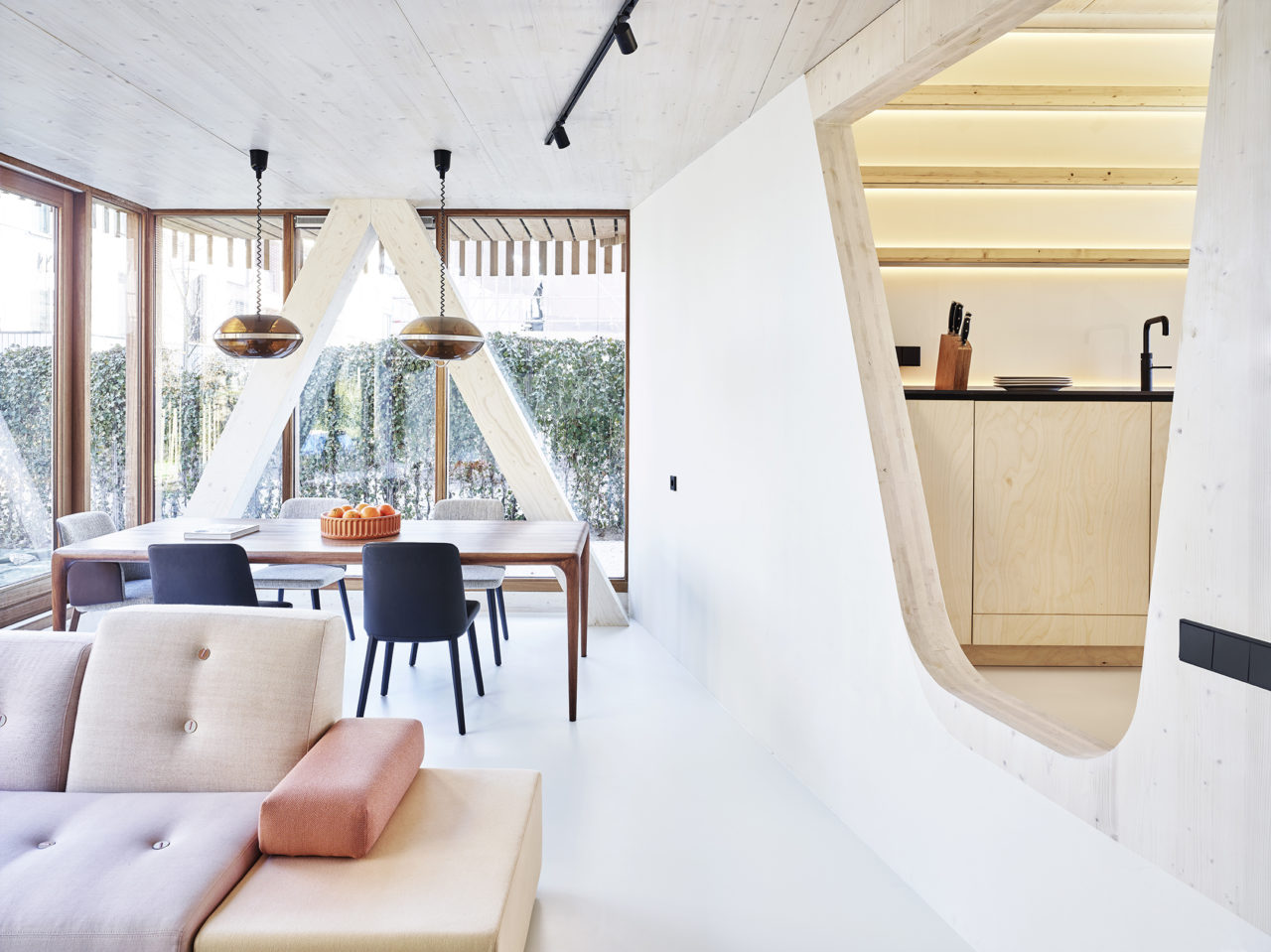
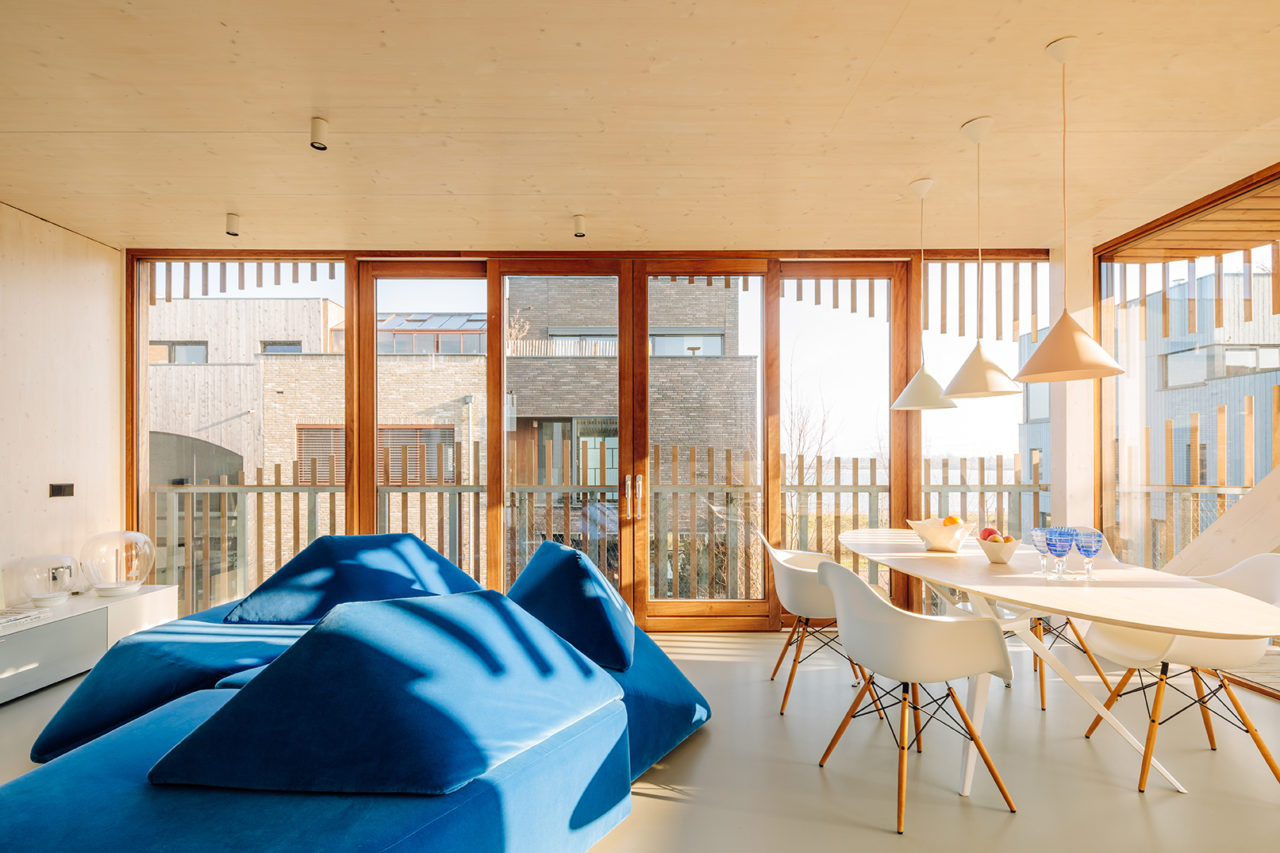
Freebooter’s shape and detailing demonstrates of biophilia, a philosophy and design language that is key to GG-Loop’s ethos. The architecture practice also worked closely with regional craftspeople to finish Freebooter’s interior. Organic lines combine with convex and concave surfaces to carry the discreet nautical theme indoors.
White-washed timber formwork transitions from integrated stairwells into Senso-finished walls, ceilings, and color-matching floors. Space age-like cut aways make for unencumbered sightlines between different rooms of each split-level duplex. Exposed concrete slabs and polished surfaces make an appearance in KCP Amsterdam and Peer Kolsters outfitted kitchens and bathrooms; complete with Flaminia, Meir, and Villeory-Boch fixtures.
Artemide, Wever&Ducré, and LEDBCN luminaires add to the eclectic, quintessentially Dutch furnishing and accessory selection supplied by Plaisier Interieur. Hella Jongerius’ iconic Vitra Polder Sofa is a more than appropriate inclusion.

